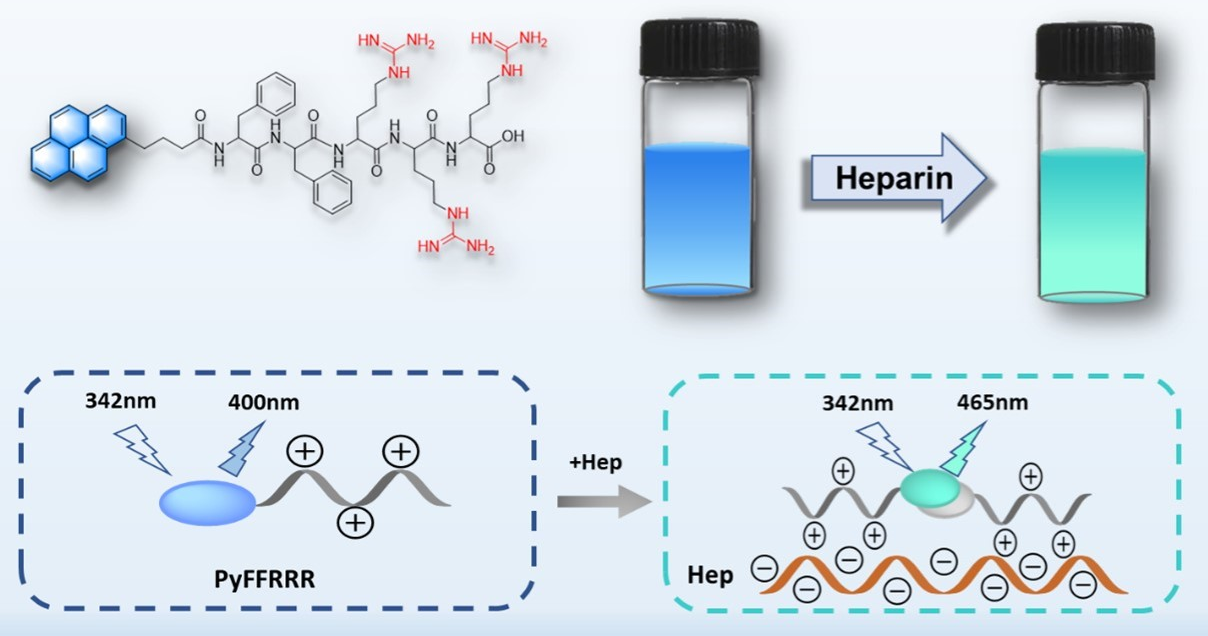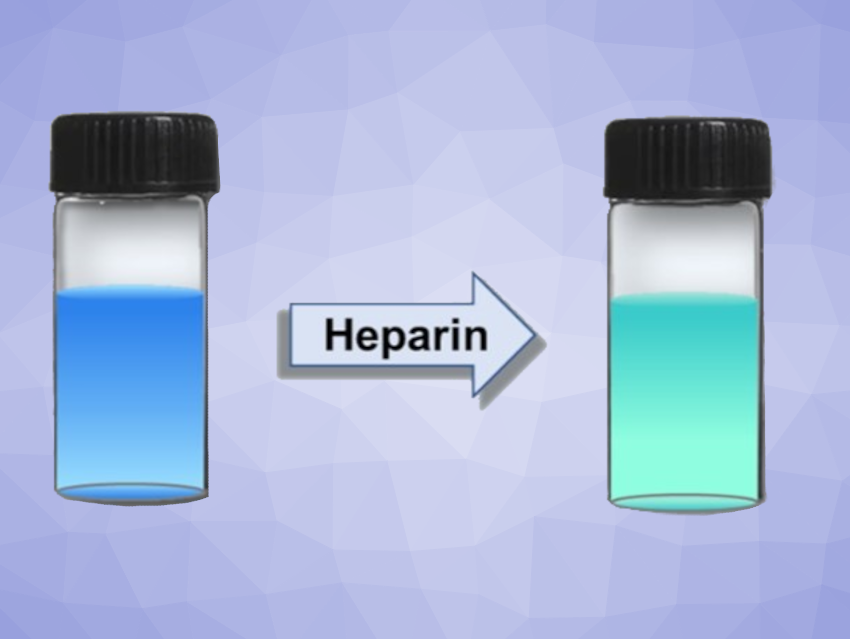Heparin is a commonly used anticoagulant in medicine, i.e., it prevents blood clots. Too much heparin can cause serious adverse reactions, which means that the convenient and accurate detection of heparin levels is important.
Guanying Li, Xi’an Jiaotong University, Shaanxi, China, and colleagues have designed a pyrene-based self-assembled fluorescent peptide, PyFFRRR (pictured below), and studied its sensing properties for heparin. The “Py” stands for 1-pyrenebutanoic acid, which is coupled with the pentapeptide Phe-Phe-Arg-Arg-Arg (FFRRR). PyFFRRR has a high affinity to heparin (Hep), binding via electrostatic interactions.
The binding of heparin triggers the aggregation of PyFFRRR, with a morphological transition from self-assembled nanofibrous structures to spherical particles. This leads to a change in the fluorescence properties of PyFFRRR, which allows the ratiometric detection of heparin.

According to the researchers, PyFFRRR shows high sensitivity and excellent selectivity for heparin over other analytes and can be used to accurately detect heparin in human serum samples. This work provides a simple and practical method for the detection of heparin.
- Pyrene‐based self‐assembled peptide for ratiometric detection of heparin,
Liang Shao, Hongwen Yu, Jiaqi Song, Shichang Liu, Guanying Li,
ChemBioChem 2023.
https://doi.org/10.1002/cbic.202200652




